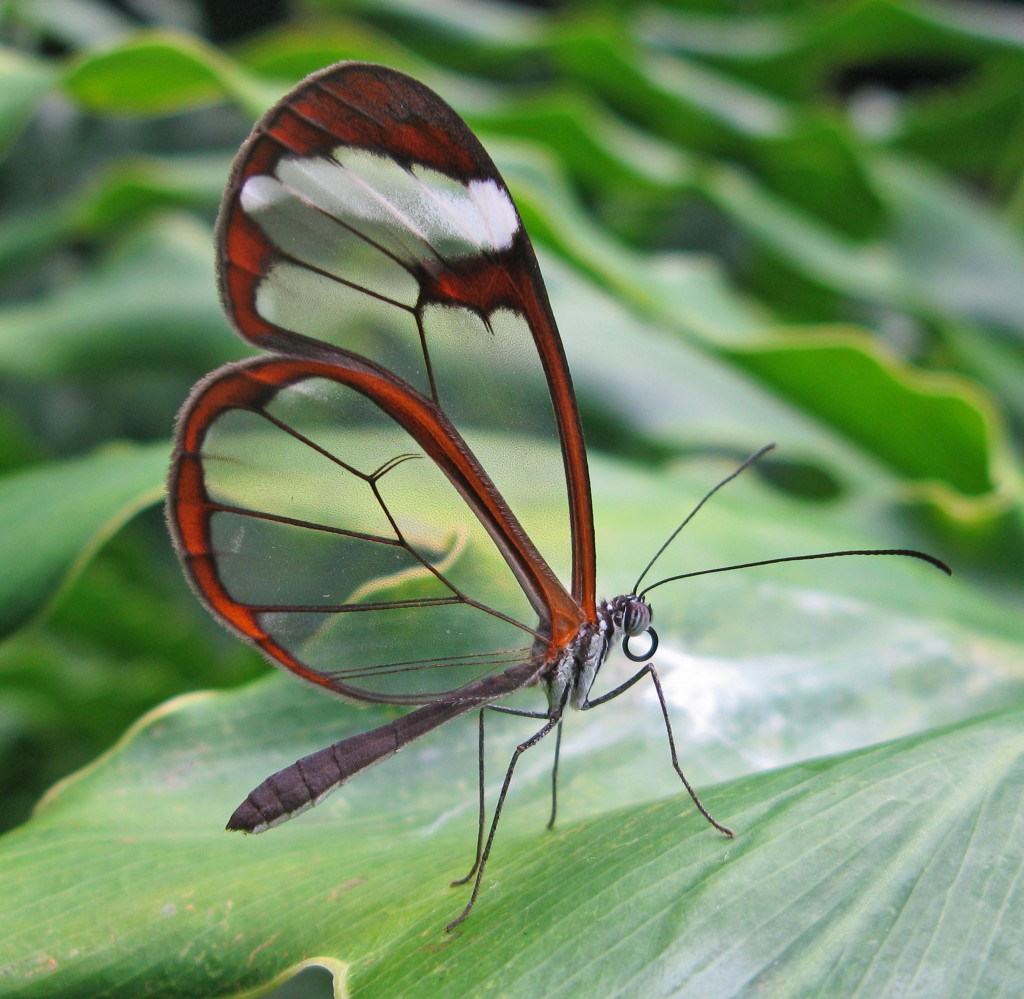
The glass-winged butterfly (Greta oto) has wings that are transparent. The tissue between their veins looks like glass, as it lacks the colored scales found in other butterflies. These clear wings make it extremely difficult for predatory birds to track it in flight.
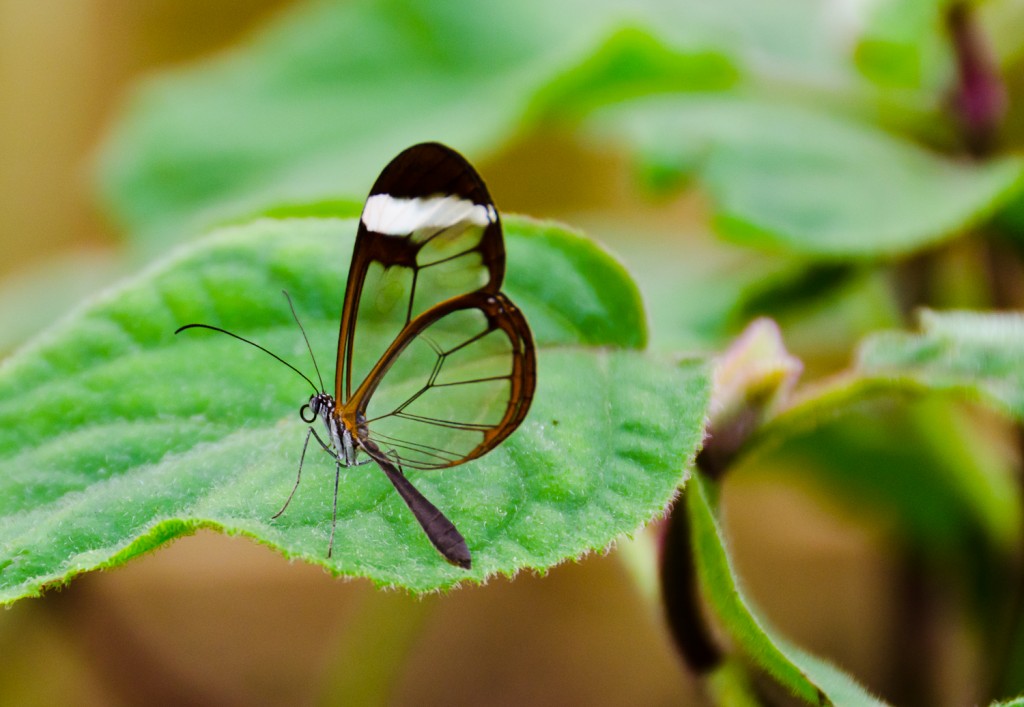
Although most abundant in Mexico, Panama, and Colombia, glass wings migrate great distances and can be found as far north as Florida.
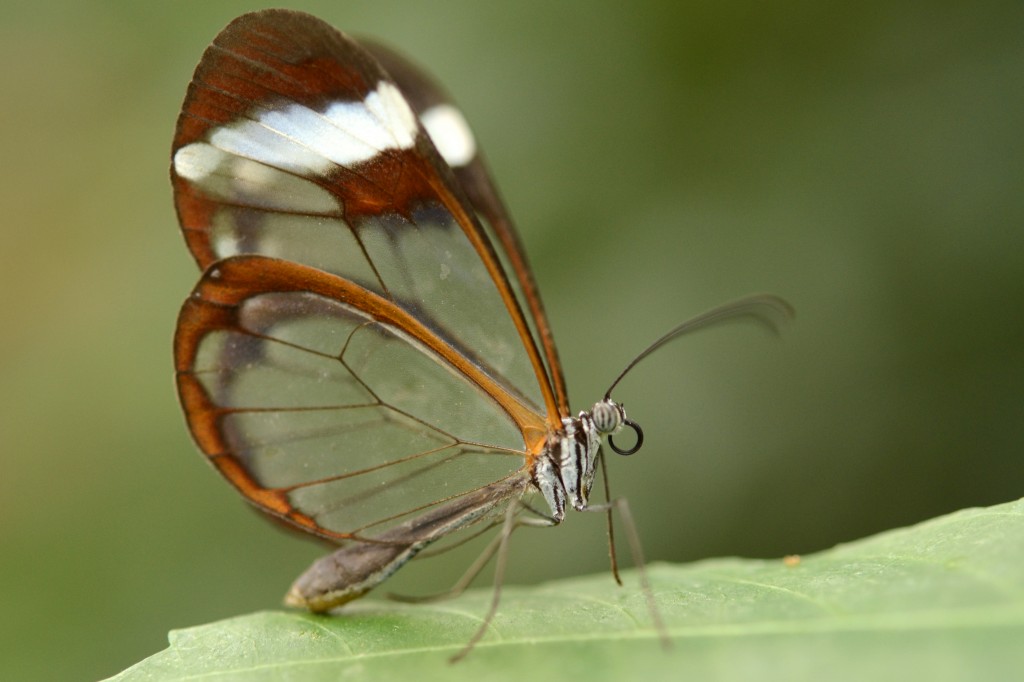
They feed on common plants like Lantana, a shrub with aromatic flowers, and lay their eggs on plants of the nightshade family, which contain alkaloid compounds toxic to humans.
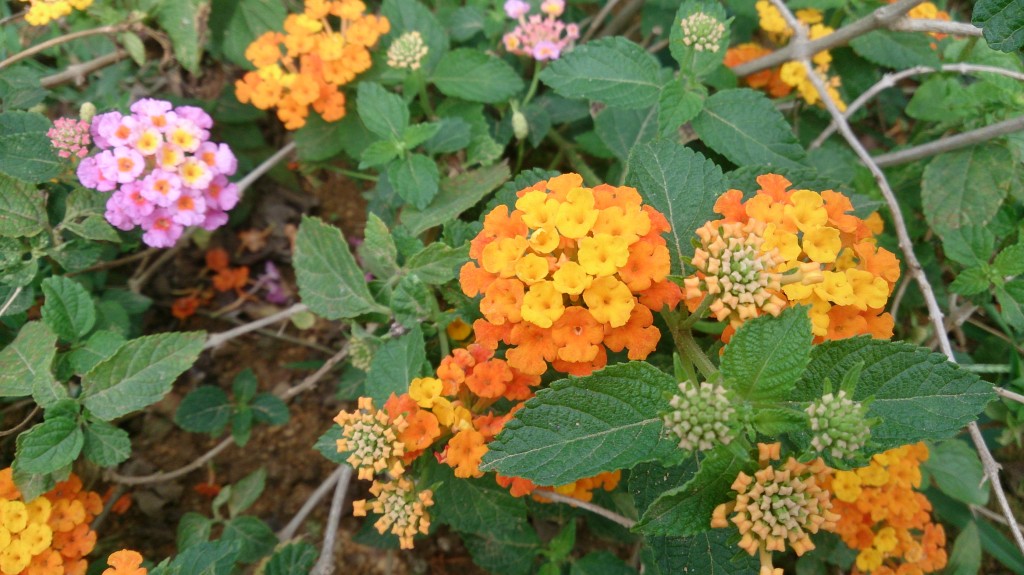
Both adults and caterpillars are able to store alkaloid compounds in their body fluids. These compounds are nauseating to birds, making them unattractive prey.
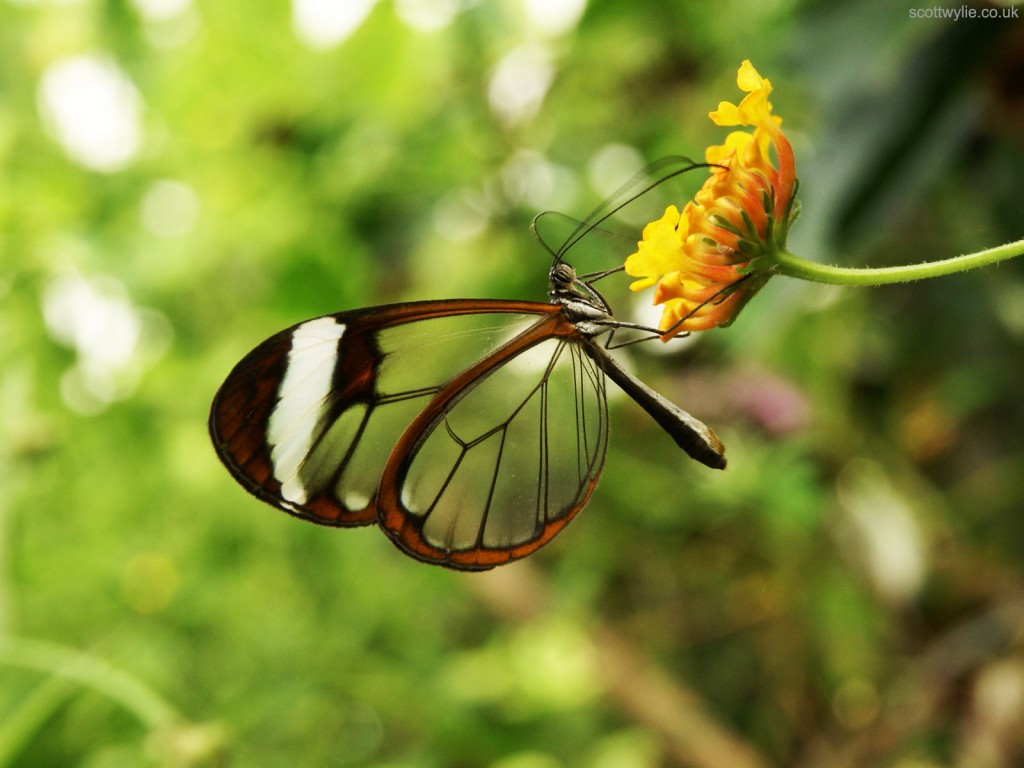
Males can convert the alkaloids into pheromones that are used to attract females. Groups of males flutter around spreading pheromones in order to help them to pair with a female, a behavior called lekking.
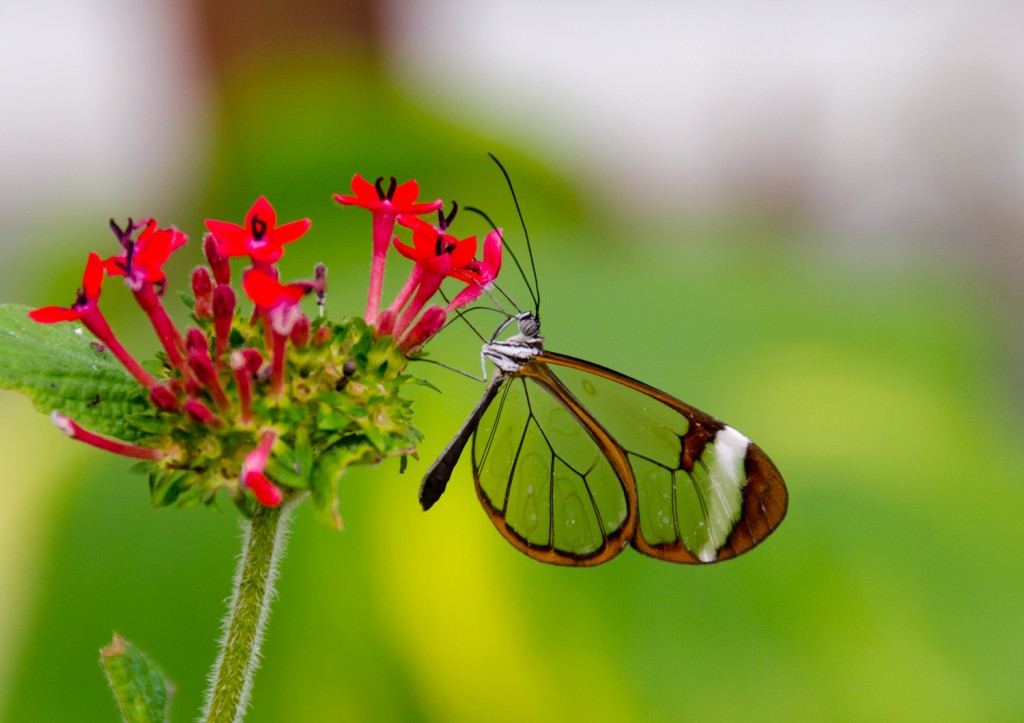
References:
Henderson, C. Field Guide to the Wildlife of Costa Rica. University of Texas Press, 2002. http://goo.gl/vY3dkk
“Butterfly and moth gallery and facts”. Natural History Museum, London. Accessed August 12, 2014. http://www.nhm.ac.uk/visit-us/whats-on/temporary-exhibitions/amazing-butterflies/butterfly-gallery/
Fiske, P., Rintamaki, P. T. & Karvonen, E. Mating success in lekking males: a meta-analysis. Behavioral Ecology 9, 328–338 (1998)
Photo Credits:
1. David Tiller
3. russavia
4. Lantana camera – Mokkie
6. Scott Wilie
